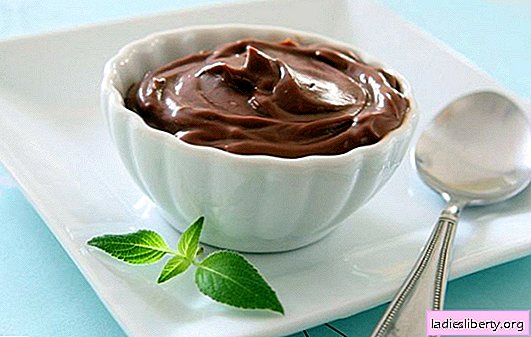
Among those who are fond of indoor plants, for sure there are those who want to see a citrus tree on their windowsill.
It’s easy to buy one in a flower shop, but it’s much more exciting to grow mandarin from seed yourself.
Considering the fact that such a tree is not whimsical at all, it grows fast, and you can easily keep it in the house, growing mandarin from seed will bring only pleasure.
Grow tangerine from seed at home: seed selection and preparation
Pick the seeds. Extremely large specimens with rounded sides are suitable for planting. Plants and them are strong, fleshy and more likely that such sprouts will survive. Flattened and small seeds of offspring will not produce. Also, it is worth paying attention not only to the seeds that you will plant, but also to the fruit from which they are taken. It is believed that the more attractive the size and taste of the fruit from which the seed will be taken, the more likely the fruits of its descendants will be similar. The main rule of selection: we choose the best from the best.

Before planting seeds need to be prepared. To do this, wrap them in a gauze cloth soaked with water or a cotton pad for five days. Seeds should nourish moisture and swell, this will help them open faster.
Do not fill them with water to the very top. It will be enough to periodically wet the cloth in which they are wrapped with water.
Not a big tip: even if you want to receive only one tangerine tree in your collection, still prepare and plant more seeds. After all, some may not ascend, and some after germination, die from the disease.
Grow mandarin from seed at home. Sowing
The seeds lying in the raw gauze, having sufficiently swollen, are ready for planting. For seedling seeds are planted in the nursery. This can be one common pot for all seeds or a plastic cup with a hole in the bottom for each seed separately. If a sprout appears from a seed, then this is the root. When planting, lower the seed into the ground with a sprout down to a depth of 1-1.5 cm. And water it abundantly.
For faster germination, it is recommended to cover the soil of the pot with a transparent plastic bag. Thus, a special, more humid microclimate is created under the package, which helps speedy germination. If you do not cover the seeds, this does not mean that they will not germinate. So, if you do not want to, you can’t hide. Seeds will germinate, but will do so later and most likely in smaller quantities.
After sprouting tangerine, it needs to be dived, or, more simply, transplant. This is done when the first main leaf appears in the plant. The newly planted plant is planted in a pot of a sufficient size to a depth of about 1 cm deeper than it was in the nursery. A transshipment method is used, in which the soil from the roots practically does not crumble and the earthen lump together with the roots is carefully transferred to a new pot with soil. The plant with this method of transplantation is practically not injured and continues to grow actively.
Amateur gardeners know how important drainage and large holes in a flower pot are for a plant. The bottom of the pot is poured with pebbles, into which the mandarin will be transplanted, and covered with soil from above.
Not a big tip: pebbles and pieces of polystyrene can be suitable as drainage. It is only important that he fulfills his function - does not allow stagnation of excess moisture.
In the flower shop for sale there is a special soil for citrus plants. He is the best suited grown mandarin at home. Also, the soil can be mixed independently by combining turf and sheet earth in a ratio of 3/1 with the addition of 1 part of sand. Mandarin does not like peat and will not grow there, so you can use any light mixture, if only it would not be peat.
Mandarin grows slowly and the first shoots are possible only after three weeks after planting. You should be patient, because in a year the plant will be able to rise no more than 20 cm from the ground.
Sufficient room temperature for the growth and flowering of a tangerine tree is an average of 19-26 degrees, but he is not afraid of heat.
Growing tangerine from bone at home: lighting, care, top dressing
The main care consists in watering, top dressing, moistening the leaves and adequate lighting of the plant. If desired, you can give your desired shape of the plant to your taste by cutting off excess branches. It is desirable to water every day or every other day as the soil dries. Do not allow overdrying of the soil. Grown tangerines at home are very fond of moisture at any time of the year. It’s hot in summer and dries on battery in winter.
The leaves of the tangerine tree are always green and, like the roots, need enough moisture. Several times a day, it must be sprayed from a spray or put a cup of water next to the plant. In the second case, the foliage will be sufficiently evaporated from a cup of moisture.
Feed a tree it is necessary 2-3 times a week immediately after watering. You can not limit yourself to the choice of chemicals for feeding. In the flower shop there are even fertilizers, both separately for the soil, and separately for accelerating growth. It is better to use in combination or alternate first one drug for several months, then another. Do not violate the instructions in the instructions, but use as much as is written, otherwise an overabundance can seriously harm the plant.
Tangerine grown at home is very fond of light, so it is better to place a pot with a plant in a well-lit place with direct sunlight. Suitable south, southeast and east sides. In summer, you can take the tree outside.
The plant does not need special lighting if it has a full sunny day. Only in rare cases when there is very little sun can a plant be artificially illuminated. A special phytolight is screwed into the place of a conventional light bulb. Only this must be done very carefully, gradually accustoming the plant to additional illumination otherwise, it can negatively react and discard the foliage.
Another main criterion for leaving is the annual transplant of the plant into a new container in diameter 2 cm larger than the previous one. A transplant should be carried out in the period before the start of growth.
When the fruit is tied up and gaining weight, you should tie the branches together or tie them to the support. Otherwise, they may break under the weight of the burden.
Growing tangerine at home: problems, pests, diseases
Grown tangerine at home - a plant unpretentious, loves water and light, not too picky about the soil, but even it can cover the disease. The reason for this can be both pests and diseases.
Pests live on branches, foliage and roots. The most common are:
Red spider mite. The insect, which is almost invisible to the human eye, can parasitize on the plant for a long time until it is detected. In size, it reaches no more than 1 mm. When infected with this tick, the plant becomes sick, brown spots appear on the leaves, the so-called marbling of the leaf. Later, the affected sheets die. In the advanced stage of this disease, between the leaves and branches, you can see a thin cobweb and accumulations of ticks at the base of the stem and leaves. But do not wait until the parasite so clearly shows itself and eradicate the disease at the initial stage.
The plant acquires an ailment when for a long time it is in a room with dry air, and its foliage is not sprayed. The complexity of the situation lies in the fact that if a mite does not have a favorable environment, it will hibernate for an indefinite time and will come to life as soon as possible.
You can get rid of it by bathing the plant in the shower or by spraying it well with a spray using a weak solution of potassium permanganate. But it is worth bearing in mind that at the first opportunity, the pest will again declare itself. Experienced flower growers recommend using tweezers to collect the tick from branches and leaves, but something here suggests that you can skip a couple of insects and after a while the plant will become sick again. Whatever happens, you need to systematically moisten the foliage and make souls for the tree.
Shield. This insect sticks to the leaf and absorbs the victim's juice. The place of its attachment turns yellow, and the sheet subsequently dies. The insect is not large (2 mm. In length), and you can notice it with the naked eye. It is called a scale insect, because it has a body in the form of a shell or shield. Having stuck to a leaf, it looks like a plaque. It is dangerous because it multiplies very quickly and if planted, it will cover not only the foliage and stem of the mandarin, but will also move to nearby plants.

The causes of scabies are excessively high humidity and lack of ventilation in the room. That is why it is very important to ventilate the premises and prevent excessive and prolonged dampness of the soil.
How to deal with it? It is very difficult to do this, since it is protected by external shields. The mechanical method of controlling is to remove the insect with either a toothbrush or a cloth soaked in a thick soapy solution. There is a chemical way to remove the pest with special chemicals, but it is better not to do this in a living room. For example, Aktara does a good job. After this treatment, you should wipe the windowsill and the corners where the plant stood.
Mealybug. This insect is popularly called sucking lice of white or pink color. If a white, sticky liquid characteristic of these insects appeared on the leaves of the plant, then this is a mealybug. It reaches up to 7 mm in size, so you can even notice it with the naked eye. The insect infects the mandarin on the roots, entangling and killing only the roots of the plant.
You can understand that the mealy worm is parasitic if you get the plant out of the pot. White rot is very clearly visible, entangled in the root and spread throughout the soil in a pot. The grown tangerine at home can be threatened by this ailment, if there were interruptions in care, stagnation of water in a flower pot, and poor-quality already contaminated soil was used.

To combat them, both folk methods and chemical methods are used. Of the folk methods, the most effective is considered a soap solution in which the roots of the plant are washed. However, it is best and probably more effective to use chemicals. Getting into tangerine juice, the drug makes it poisonous for a while. After drinking poisoned juice, the insect dies. The affected root system must be sorted, shake, rinse, process the flowerpot, and transplant the cleaned plant into a new soil.
Diseases that can spoil the life of grown mandarin at home, are not few. Most common in citrus fruits, such as gray rot, niello, late blight, fusarium require special and comprehensive treatment with fungicides.
Mandarin also often suffers from the crushing of new leaves and the drying of old ones. This indicates a lack of vitamins. The plant needs an emergency transplant into a new mineral-rich soil.
Premature falling of leaves, the appearance of rusty spots and dry edges on the sheet indicates improper watering. Too frequent or irregular watering is detrimental to the plant. A prerequisite for watering is timeliness and moderation. Before the next watering, the soil should dry out a little.
Wrinkled and dried leaves due to pests or sunburn. Although the tangerine tree loves the sun, it’s not so much as to dry the tree under direct scorching rays.
Drafts, watering with cold water, lack of light, low temperatures lead to partial or complete loss of foliage by the plant.
Tangerine grown at home, with proper care, can easily turn into an excellent flowering tree up to 1.5 meters in height. If you follow the rules, then everything will work out.











